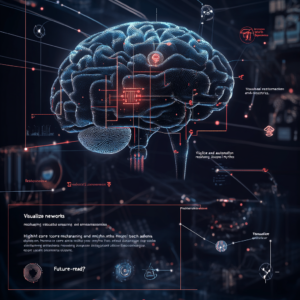
Nobody wants to talk about AI safety. Instead, they cling to five comforting myths
The Comforting Myths of AI Safety: A Reality Check
Artificial Intelligence (AI) is all the rage these days, strutting around in code like some over-optimistic pop star, promising to fix everything from your morning coffee order to global cybersecurity. Yet, as we dive deeper into its glittering world, we stumble upon a series of comforting myths—perhaps better described as fairy tales—that gloss over the genuine concerns surrounding AI safety. So let’s put on our detective hats, sifting through the smoke and mirrors to unearth what’s truth and what’s fiction.
Myth 1: AI is the Magic Wand for Cybersecurity
Ah, the ever-inviting notion that AI is the be-all and end-all of cybersecurity! Don’t you wish? The truth? AI is more like a trusty sidekick than a superhero. Sure, it analyzes data faster than a caffeinated squirrel, and yes, it can flag potential threats. But let's be real; it doesn’t magically fix everything for you!
So why cling to this illusion? Cybersecurity needs a multifaceted approach that combines cutting-edge technology with the good old-fashioned human brain. AI can automate mundane tasks, but it can’t replace the nuanced judgment of skilled professionals who, let’s face it, have experience navigating the treacherous waters of cybercrime. And have you seen how inventive cybercriminals are? They evolve quicker than a bad reality show plot twist, and AI—despite its impressive skills—can still be taken for a ride.
Myth 2: Personal Data is Up for Grabs
Picture this: you open a fun new app, thinking it’s harmless. But deep down, a nagging thought whispers, “What’s happening to my personal data?” Fear not, dear reader! Contrary to the belief that you have no control over your information, the law is on your side. You still hold the reins to your personal data—yes, even in this digital wonderland.
Thanks to regulations like the General Data Protection Regulation (GDPR), you’ve got rights. Organizations need to be transparent about how they use your data, and you can object if it feels wrong. So don’t feel shy about pushing back when needed. With the watchful eye of regulatory bodies, there’s a safety net in place ensuring your privacy isn’t tossed aside as if it were yesterday's trash!
Myth 3: AI Developers Are Gorging on Data without a Care
Here’s a lovely picture: AI developers chaotically gobbling up your data while laughing maniacally in a darkened room. Spoiler alert: it’s not quite like that! Yes, the industry has its pitfalls, but transparency is a non-negotiable.
If you think developers are zooming around with your data unchecked, think again! Regulations demand they clarify how they use personal information. Want to know how they’re training those fancy AI models? They must spell it out to you clearly. So, if you feel a little uneasy, remember—the industry is gradually waking up to the need for transparency. You deserve to know what happens to your data, just like you’d want to know why your pizza has pineapple on it.
Myth 4: AI is an All-Seeing Oracle
Let’s clear this up once and for all: AI is not flawless. Far from it! If you've ever received a wildly inaccurate result from a voice assistant, you know exactly what I mean. AI can fall prey to “hallucinations,” producing inaccurate or nonsensical outputs. Yes, even the smartest algorithms can get it wrong; they require constant oversight and refinement.
So, believing that AI “always knows what it’s doing” is like believing a cat can genuinely understand the nuances of human economic theory—cute in thought, but ultimately absurd. AI systems need human intervention, especially in critical areas where accuracy is paramount. The wise will embrace AI’s power with an understanding of its limits, rather than placing blind faith in it.
Myth 5: Only the Wealthy Get to Play with AI
Oh, the era of “only for the elite”! This myth belongs in a historical museum, for it’s outdated. AI technology is no longer shackled to the privileged; it’s becoming more accessible every day! Thanks to cloud-based solutions, small businesses can harness the power of AI without cashing out their life savings.
Imagine your corner coffee shop, once just a quaint little place, now using AI to manage inventory or personalize customer experiences. That’s the marvel of our current landscape. As technology becomes more user-friendly and affordable, AI is opening doors for businesses of all sizes to join the party—a party that was once exclusive to those with deep pockets.
The Realities of AI Safety
Data Privacy and Ownership
Let’s talk about the elephant in the room: the vast amounts of data AI processes. The complexity of data ownership looms large, with risks of unauthorized access and breaches lurking about. Having robust security frameworks like those offered by Microsoft Copilot for Security isn't just smart; it's essential! Think of it as your digital fortress, offering protection against threats.
Compliance Issues
Navigating the compliance landscape in regulated industries is like walking a tightrope—one wrong step, and it’s game over. Developers must operate within a web of intricate laws that dictate data usage and security measures. To be compliant, they should always be forthright about how they handle information. It’s the only way to foster trust and ensure everyone's rights are protected.
Hallucinations and Misinformation
Generative AI is a double-edged sword. On one hand, it’s a fantastic tool for creating content and interaction; on the other, it can unintentionally churn out misleading information—the infamous "hallucinations." The consequences can spiral into misinformation, affecting crucial sectors like health or social narratives. Vigilance and continuous model improvement are non-negotiable for keeping the facts straight.
Conclusion
AI safety isn’t a buzzword; it’s a necessity in our tech-driven world. By dismantling these comforting myths, we illuminate the genuine challenges that lie ahead. Here are the nuggets to walk away with:
- AI is a complementary tool in cybersecurity, not a magic fix.
- Your data isn’t up for grabs; it’s yours to control.
- Developers must be transparent in their data usage practices.
- AI needs human oversight to prevent missteps.
- AI solutions are now within reach for businesses small and large.
As we navigate this fascinating yet convoluted landscape of AI, awareness is paramount for both safety and effectiveness. Let’s keep our eyes wide open and our discussions ongoing.
Call to Action
Want to stay up to date with the latest news on AI safety and cybersecurity? Subscribe to our Telegram channel: @channel_neirotoken. Stay informed and join the conversation, as we explore the exciting world of AI together.

